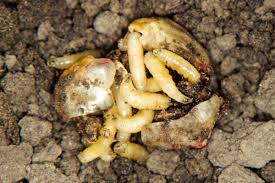Seedcorn maggots may be tiny, but they can wreak havoc on corn fields and significantly affect crop yields. Understanding their lifecycle and knowing how to treat an infestation is crucial for maintaining healthy crops. By taking proactive and reactive measures, corn growers can protect their investments and ensure a robust corn harvest.
What Are Seedcorn Maggots?
Seedcorn maggots are the larvae of a small fly, the Delia platura. These pests are common in cooler, damp conditions and are troublesome during the early planting season. They primarily feed on decaying organic matter but will also target seeds, causing significant damage before the plants can even emerge.
The Life Cycle of a Seedcorn Maggot
The lifecycle of a seedcorn maggot begins with adult flies laying eggs in the soil, particularly where there's plenty of organic matter. Within two to four days, the eggs hatch into larvae that immediately start feeding. This larval stage lasts for about two to three weeks, during which time they can severely damage seeds and young plants. The larvae then pupate in the soil, emerging as adult flies after about a week, ready to repeat the cycle. There can be several generations per year, depending on weather conditions.
Seedcorn Maggot Treatments
Effectively managing seedcorn maggots involves a combination of proactive and reactive strategies:
Prevent Seedcorn Maggots
Seedcorn maggots pose a silent yet serious threat to corn fields, especially during the early stages of crop development. However, with knowledge of their lifecycle and effective cultural and chemical controls, you can protect your crops from these damaging pests.
If you’re looking for the right agricultural equipment to help navigate these challenges, a local John Deere dealer can help.
